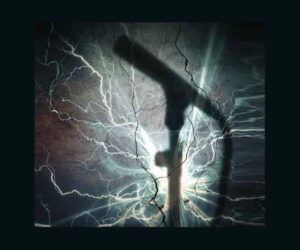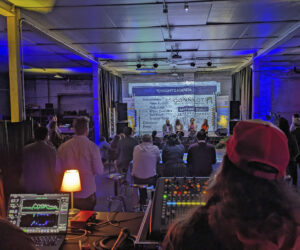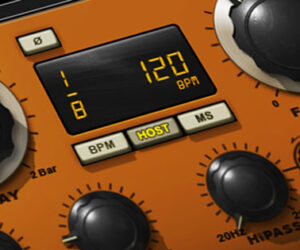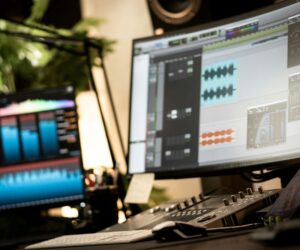Most of us feel that we know good sound when we hear it. We also have tools to help us analyze the properties of sound, and we’ve learned to interpret those measurements and equate them with good and bad.
But I find it fascinating that sometimes even when things measure “poorly,” we say that it sounds good anyway. Or, conversely, sometimes the measurements look spectacular but “there’s just something wrong.” The challenge is defining what actually constitutes “good” sound, and how we know it is so.
A major issue is that our references are all different from one another. Actually, it goes further than that — many of us have rather poor references. There might be a high-water mark in our memory of some time in the past when we heard a particularly amazing sound system and/or a really great mix.
But memories of sound (or most anything else for that matter) are quite fallible.
In addition, what medium are we using on a daily basis? If it’s something like a car stereo or a smartphone, are we “listening through” their shortcomings, becoming oblivious to noticing things like their inherent distortion? Our frames of sonic reference very rapidly get used to what we’re hearing most often.
In a similar way, vision can be quickly skewed by the prevailing source of light. You’ve heard of white balance on cameras, right? Our ears do the same thing as our eyes (and both are wired to our brains) — they adjust to the prevailing conditions and consider that to be “normal.”
Live Is, Well, Live
It’s helpful to remember a time when you realized that there’s another level of sonic excellence. Not the sound, per se, but the fact that it was different and somehow “better” than average.
My favorite personal memory of this is the time I was walking across the campus of the University of Maryland, on the way to set up a recital recording, and out of one of the dorm windows, I heard a saxophone being played.
Then it struck me — I was instantly aware that it was a real, live saxophone being played by a real, live person, rather than a reproduction. Ever since that day, I’ve pondered why this was so obvious. The answers aren’t easy but one thing is clear – loudspeakers and amplifiers don’t quite do sound the justice it deserves.
Something is missing, even from the best playback or reinforcement systems on the planet. Studying this concept could help lead us toward developing better systems and/or operating them in a better fashion.
The MLA Experience
Several years ago, I followed up on a suggestion that I should check out the Zac Brown Band on tour, since they were coming through my neck of the woods here in Albuquerque. Upon arriving, Martin “Ferrit” Rowe provided me with a behind-the-scenes look at the tour’s then-new Martin Audio MLA (Multi-cellular Line Array) system.
After explaining the system and how it works, Ferrit led me around the seating area at the Hard Rock Pavilion to demonstrate the coverage. I can assure you that it was pretty amazing.
As he explained it, each driver in the array is fed independently via DSP, thus allowing the coverage to be very carefully shaped according to the needs of the space and the desires of the system techs and engineers.
I could clearly hear where the coverage began and where it stopped, and the evenness was very impressive. From 10 feet in front of the stage to 150 feet back, there appeared to be only 3 dB of difference, even in the mids and highs. I’ve never heard anything like it.
But more importantly, all this whiz-bang technology had provided good sound! Normally I’m not all that wild about shows like this, but it was definitely a treat in this case.
And kudos to Preston Soper on systems and Eric Roderick at front of house for their fine work. They had the system dialed in to a degree that, in my opinion, is more rare than it should be.
Of course the best-sounding system and mix in the world doesn’t mean much if the music is lousy. This was not the case with the Zac Brown Band — I really enjoyed the variety of material, the tightness of the band, and the fun that they were having along with the audience. It was just simply a great show.
Back to References
There’s nothing wrong with regularly listening to music in your car or on a phone or both. You may also have a very good feel for what sounds good, and routinely deliver this with your own system and/or mix. But I also think we need to challenge our boundaries in order to find ways to listen to better systems as often as possible.
Not only that, but we should try to listen to acoustic instruments, whether they be pianos, drums, classical guitars or saxophones, as often as possible. There simply is no reference better than the real thing.
Those of you with a “day job” of mixing grindcore (death metal, industrial music) may scoff at the notion that listening to Chopin on a Steinway is going to help, and to an extent, you have a point. But anyone in this business for more than a few years knows you’re likely to work with a very wide variety of sources and systems over the course of a career.
There likely will come that day when knowing what a piano or a saxophone really sounds like will be quite valuable. Being able to bring it up in the house and remain confident that it actually sounds the way you think it should will be a comforting feeling. It also might give one a good reason to protect one’s hearing along the way…
My final thought: as audio professionals, we are personally the key to good sound. Today’s technology, deployed properly, reproduces sound better than ever before.
Yet a constant refrain in magazines and online forums, as well as our own conversations, is that good sound seems to be more elusive than it should. We, the system designers, technicians and operators, are responsible.
Now get out there and attend a Chopin concert.















